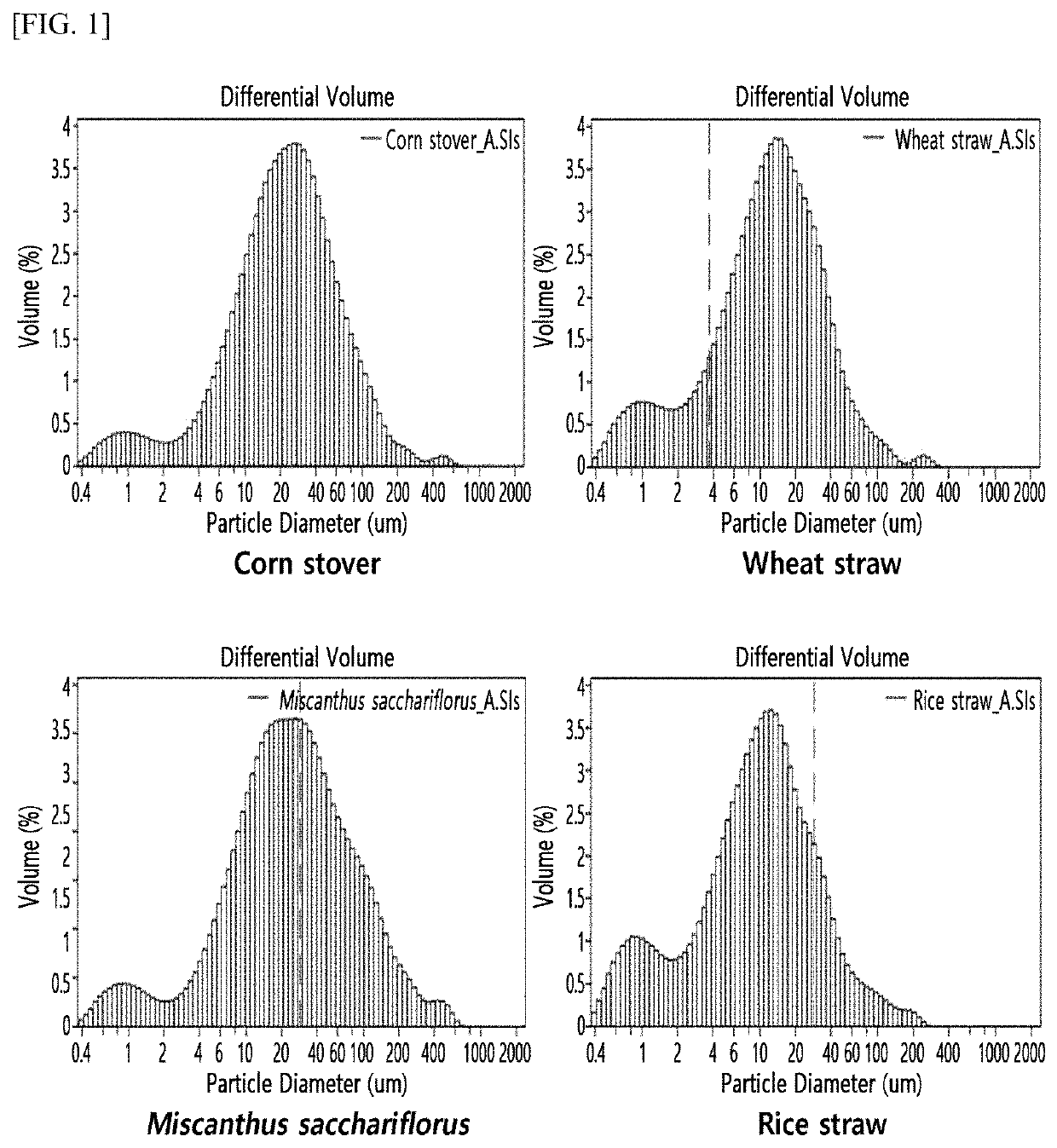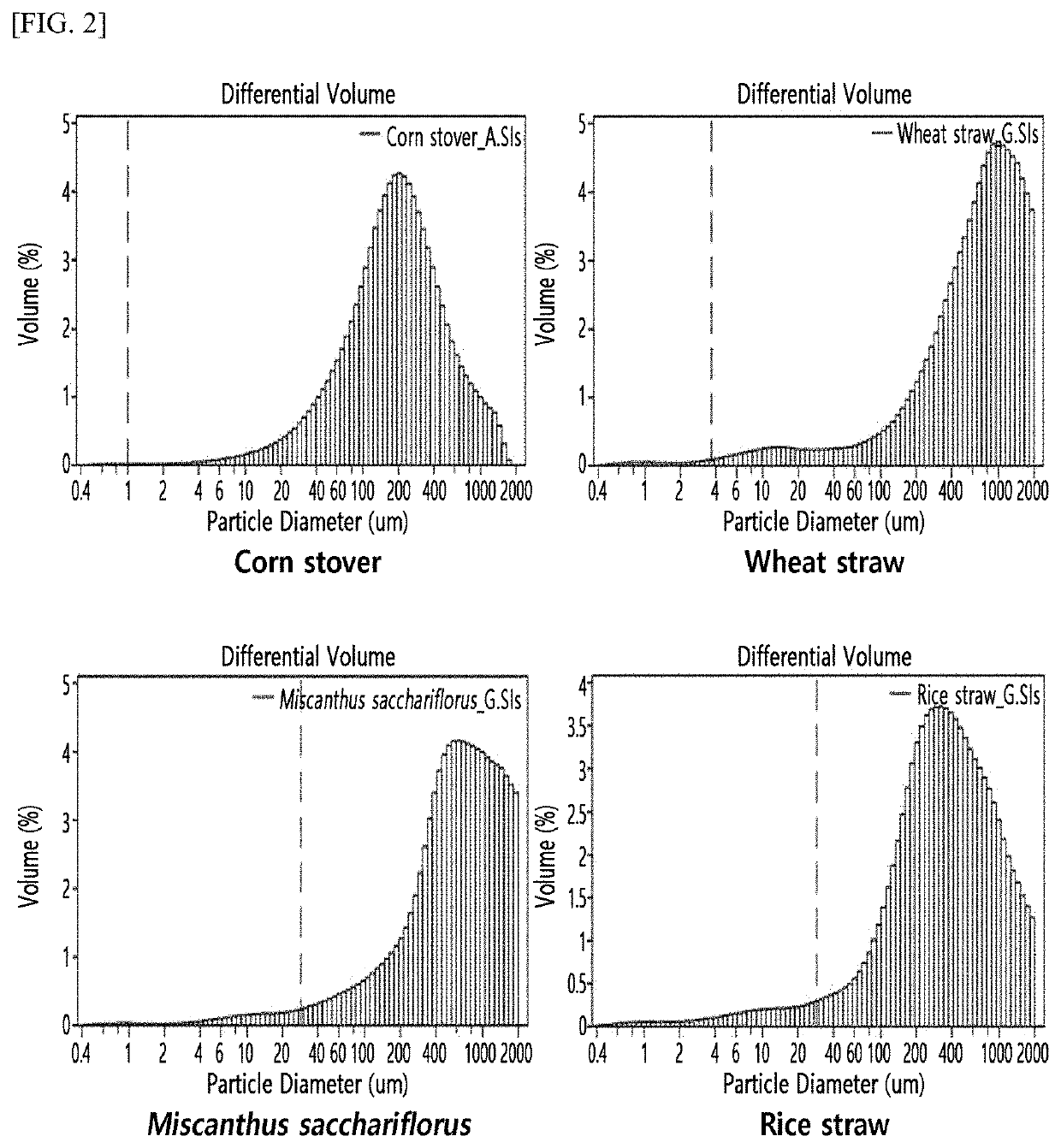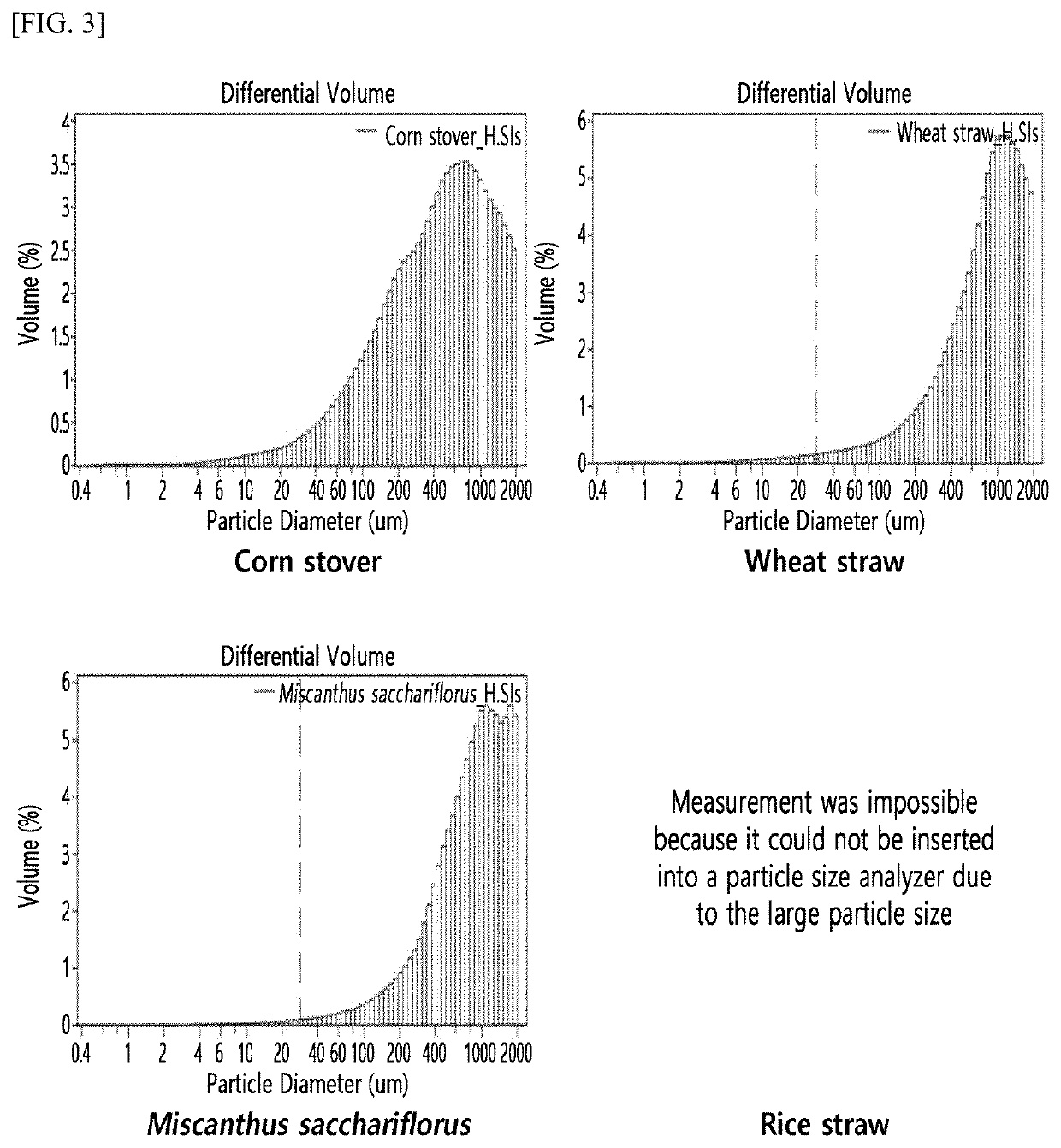Physically pretreated biomass composition capable of membrane filtration
a technology of biomass composition and membrane filtration, which is applied in the direction of grain treatment, glucose production, fuels, etc., can solve the problems of high operating cost of all processes, inefficient separation, and high cost of biomass pretreatment, so as to achieve the effect of economic feasibility of processes and final yield
- Summary
- Abstract
- Description
- Claims
- Application Information
AI Technical Summary
Benefits of technology
Problems solved by technology
Method used
Image
Examples
example 1
on of Physically Pretreated Composition of Herbaceous Biomass
[0051]In order to prepare a physically pretreated herbaceous biomass composition, the following experiments were performed.
[0052]Specifically, herbaceous biomass of corn stover, wheat straw, Miscanthus sacchariflorus, and rice straw were physically pretreated by attrition milling, grinder milling, hammer milling, or cutter milling method. The attrition milling was performed for 10 minutes at 300 rpm using an attrition grinder (KHAM-305, Hankook Mineral Powder, Co., Ltd.). In addition, the grinder milling, hammer milling, and cutter milling were performed using a multi-purpose grinder (Multi Mill, RD1-15, 9 ). 2 mm screen was used for cutter milling and hammer milling, and the grinder milling was treated by adjusting the clearance to be 50 μm.
example 2
nt of Particle Size Distribution and Density and Composition Analysis of Pulverized Biomass Composition
[0053]The following experiments were performed to determine the particle size, density and composition of the physically pretreated herbaceous biomass composition.
[0054]Specifically, after tapping for 1 minute using 10 g of the physically pretreated composition prepared in Example 1 above, the density was measured by determining its volume (Table 1), and the average particle size of the physically pretreated composition was measured by dry analysis using a particle size analyzer (Particle size Analysis, LS 13 220, BECKMAN COULTER™) (Table 2, and FIGS. 1 to 4). In addition, the components of the biomass treated by attrition milling were analyzed by the method of NREL Procedures LAP-002 (Table 3).
[0055]As a result, the density during the attrition milling treatment was 0.5 g / mL or more, and the density during the grinder, hammer, and cutter milling was significantly increased compare...
example 3
on of Particle Shape of Physically Pretreated Biomass Composition
[0056]The particle shape of the physically pretreated biomass composition was observed using a microscope (Dino-Lite, AM3113, Taiwan) (FIGS. 5 to 8). As a result, for all of the four types (corn stover, wheat straw, Miscanthus sacchariflorus, and rice straw) biomass, the native fibril inherent to the herbaceous biomass disappeared upon the treatment of attrition milling and the particle shape became uniform. However, during the grinder, hammer, and cutter milling treatments, biomass-specific coarse fibrils remained, acicular particles were generated, and the overall particle size and shape were uneven. During MF passage, these acicular particles, fibril, etc. block membrane pores, causing clogging phenomena, process troubles, and deteriorating the separation performance. In addition, biomass solids form a filter cake that makes filtration difficult, and it is presumed that the non-uniform particle shape generated after...
PUM
| Property | Measurement | Unit |
|---|---|---|
| particle size distribution | aaaaa | aaaaa |
| particle size distribution | aaaaa | aaaaa |
| particle size distribution | aaaaa | aaaaa |
Abstract
Description
Claims
Application Information
 Login to View More
Login to View More - R&D
- Intellectual Property
- Life Sciences
- Materials
- Tech Scout
- Unparalleled Data Quality
- Higher Quality Content
- 60% Fewer Hallucinations
Browse by: Latest US Patents, China's latest patents, Technical Efficacy Thesaurus, Application Domain, Technology Topic, Popular Technical Reports.
© 2025 PatSnap. All rights reserved.Legal|Privacy policy|Modern Slavery Act Transparency Statement|Sitemap|About US| Contact US: help@patsnap.com



